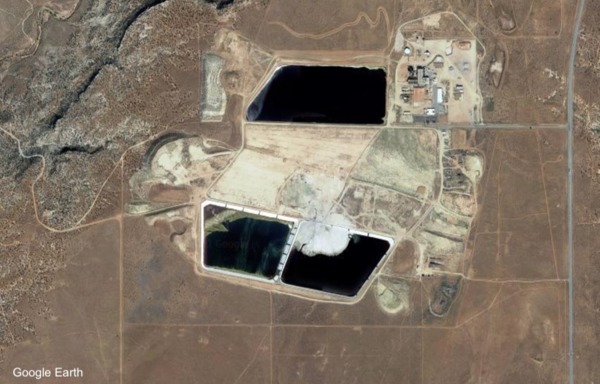Dublin Core
Title
Description
During the height of the atomic age after World War II, southern Utah was teeming with government employees scouring the landscape with Geiger counters looking for one special rock: uranium. Used in the creation of metals and nuclear bombs, this radioactive mineral and its byproducts proved to be a huge health hazard. Radiation from uranium mining poisoned water aquifers and streams, which disproportionately affected Utah’s Native peoples at that time – and continues to do so today.
Uranium was first discovered in large quantities on the Navajo reservation by a ten-year-old boy named Luke Yazzie. During the war, representatives from Vanadium Corporation convinced Yazzie to show them where he found the rocks in exchange for a free soda. Yazzie was never compensated for his important discovery, even after years of working as a uranium miner.
Between 1944 and 1986, almost 30 million tons of ore were mined from Navajo tribal lands. Every day, miners brought home radioactive dust on their clothes. Stones to build homes and water for cooking were often taken from the nearby mines. Many people became sick. There are still around 500 abandoned mines on the Navajo Nation currently subject to federal clean up. The most devastating radioactive spill in U.S. history occurred on the reservation in July 1979, spilling 94 million gallons of radioactive material into the Puerco River. The pain was viewed by many as “opening up Mother Earth,” and the price that came with it is still felt deeply in Navajo country.
For other Native tribes in Utah, the fight against uranium and its contamination of water is far from over. One uranium mill near the Ute community of White Mesa has been processing radioactive waste since the 1980s, with an outdated facility that seeps dangerous chemicals into the area’s groundwater. One Ute tribal member said of the poisoned springs: “Water is sacred to us. Water is life. You protect the water because it’s going to protect you.” As White Mesa Utes advocate for the protection of their surrounding water – which many consider to be sacred – the aquifers continue to be monitored for contamination from the mill.
Creator
Source
_______________
See Nancy C. Maryboy and David Begay, "The Navajos of Utah," in History Of Utah's American Indians, edited by Forrest S. Cuch (Salt Lake City: University Press of Colorado, 2000): 265-313; Traci Brynne Voyles, Wastelanding: Legacies of Uranium Mining in Navajo Country (Minneapolis: University of Minnesota Press, 2015); “White Mesa Uranium Mill,” Grand Canyon Trust, accessed June 2021; Robert S. McPherson and Mary Jane Yazzie, "The White Mesa Utes," in History Of Utah's American Indians, edited by Forrest S. Cuch (Salt Lake City: University Press of Colorado, 2000): 225-63; Church Rock, “The Battle Continues,” The Navajo Times, last modified July 22, 2011; “Health Indicator Report of Drinking Water: Uranium,” Public Health Indicator Based Information System (IBIS), last modified May 10, 2021.

